One of the questions I’ve heard the most from friends, clients and prospects over the last 6 months or so is: How should I set up a successful employee advocacy program?
From a certain perspective, it makes sense why more companies are taking a closer look at Employee Advocacy Programs in 2022. Trust in friends and “people I know” is high. Encouraging employees to share content on social can be significantly more cost-effective than upping your ad spend. And, these programs can have a big impact on recruiting–which is front-and-center for almost every brand right now.
HOWEVER, based on what I’ve seen the last few years, I’m not 100% convinced these kinds of programs are always working as well as clients–and, more importantly, the vendors–say they are.
First, let’s take a closer look at the industry. With a quick search of “employee advocacy programs” I see four ads right at the top from vendors, followed by many links to vendors like PostBeyond and Everyone Social. And, not surprisingly, these vendors are extolling the virtues of these kinds of programs–after all, they support them! And, that’s kinda the problem. If you’re looking for honest, critical feedback or evaluation on these tools and employee advocacy programs, it’s tough to find. The only ones doing the talking are the vendors, and obviously that’s quite a one-sided conversation. So, who knows if these things are really working or not? We don’t have a lot of data or case studies to go on.
Well, then let’s look at the examples we CAN see. What about Salesforce? Now, I couldn’t find a ton of recent info on how their program is coming along, but I did find this deck from 2017 that listed out some pretty solid results:
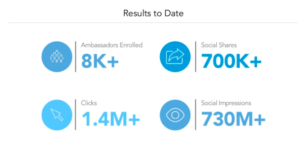
I know a number of people who work at Salesforce (and seem to love it, by the way), and these LinkedIn posts are pretty indicative of what I usually see.
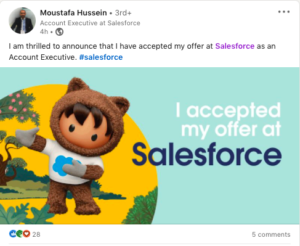
Or, these kinds of posts.

I also see people posting about open jobs a lot–a very common tactic in employee advocacy circles.
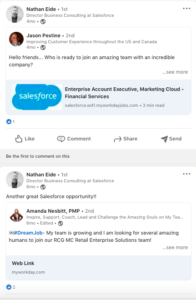
This is a core tenet of these kinds of programs–especially those that use tools (looks like Salesforce uses Smarp). Give employees templated content and let them share it. Sounds great, right? We’ll get scale! We’ll get massive reach! That’s the idea, of course. And, in this case, it does actually looks like it’s getting the intended results.
However, the downside of that is that few people engage with this kind of content. And, worse yet, you then have a lot of people share the exact same content–which we all see. It sounds great when you’re thinking about the metrics you’ll generate, but in execution it often looks clunky. It generates a lot of impressions and “stuff”, but is it really truly working toward a real business goal?
Interestingly enough, the best employee advocacy I see is from passionate employees who generate unique, original content all on their own. Like this incredible post from Rachel Estes Leyk.

She took what sounds like a horrific incident with her son and told the story of how Salesforce supported her through the entire ordeal. Here’s the full story in her post:
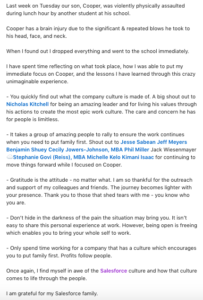
THIS is the kind of content people engage with and react to. This post generated 1,700+ likes and 300+ comments. And it didn’t include any templated or approved copy–just a straight story from the heart. This is what people connect with on LinkedIn in 2022.
Here’s another example from a Salesforce employee–this one from a woman based in Hong Kong who is talking about how Salesforce values diversity and inclusion with a shot of her speaking on stage.
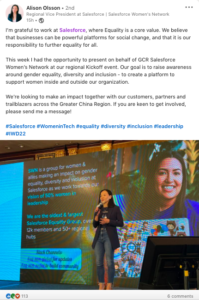
So, this presents a challenge. Do you create a program (most likely using a tool) designed to create scale? Massive reach numbers? All with the assumption that using said program may not generate the truly original and impactful stories you’re trying to uncover?
OR, do you invest your time in those people–like Rachel and Alison above–who may be your superstar employees and storytellers? Those people who know how to create human, original content that connects with people on LinkedIn? What if you created much smaller programs with much more care-and-feeding focusing just on those people? Could that be just as–if not more–productive and impactful than the bigger program?
Food for thought for those thinking of creating their own employee advocacy programs in 2022.

0 Comments